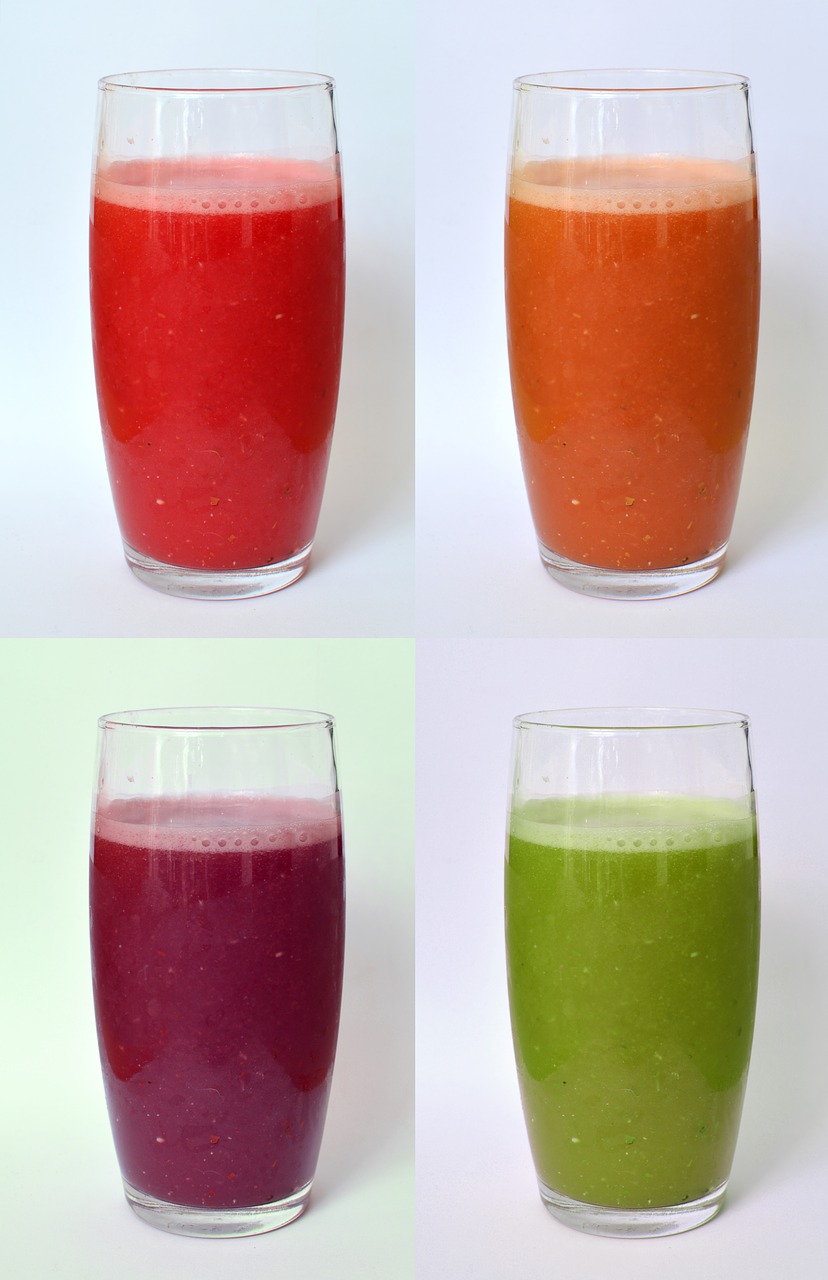Smoothie? Shake? Juice? It can get a little confusing when delving into the world of juicing for the first time.
You’ve probably had a ‘smoothie’ before and almost certainly had fruit juice.
The problem with most fruit juices are that they contain a lot of added extras-especially sugar and perhaps some preservatives to keep them fresher for longer.
Cold-pressed juices are the best of the bunch.
These are juices that have been pressed in hydraulic press juicing machines like the Norwalk that makes a really concentrated super high-quality juice.

Due to the lack of heat, all the nutrients remain within the juice so the health benefits remain.
Some cheaper juicers produce heat during operation that can damage the final juice. These should ideally be avoided if you want to get the maximum health benefits from your juicing.
We review some of the best juicers here.
A smoothie refers to a drink made with a blender. This is when all the ingredients are mixed together to form a think drink.
Blenders are great for people in a hurry and for people who might not be so concerned with getting the full nutritional benefit from their fruits and vegetables.
If I’m in a hurry i often make a protein shake using my Nutribullet blender. I just throw in some whey protein, a little milk and whatever fruits take my fancy and I’ve got a quick and nutritious snack. Much better than a chocolate bar :-).
If I’ve got some more time i much prefer to juice.
Juicing is known to preserve a lot more nutrients than blending and i like the fact that i can tailor the taste with a lot more precision.
Need some energy? Add some ginseng.
Having problems sleeping? Add some magnesium-rich leafy greens and grapefruit.
Blender Pros
- Quick. It’s easy to just throw in everything and blitz it up in a blender
- Easy to clean. Just one glass to clean and not many moving parts.
- Cheap. You can get a very good blender for under $100. A good juicer is often a lot more than this.
- High in fiber. As you are not removing the pulp like with juicing, smoothies tend to have a greater fiber content then juices.
Blender Cons
- Risk of calorie and sugar overload. It may seem like a good idea to throw in all that flavored yogurt and tons of chopped banana and ice-cream but be warned, you’ll be consuming a boatload of sugar if you do this.
- Damage to nutrients in the juice. The process of blending is known to damage some of the nutrients in the juice via oxidative stress and heat generation.
- High Fiber. To some people, this may be a good thing however a number of people are not able to digest high fiber foods. As the pulp is not removed during the blending process smoothies, depending on ingredients tend to be higher fiber than just a liquid juice extract.
Juicer Pros
- Nutrients absorbed more quickly and completely. Due to the lack of pulp and the thin liquid produced during the juicing process the juice from a juicer is absorbed into the body very fast. This means that the nutrients quickly enter the bloodstream and are readily available for the tissues and organs of our body. Fresh juices deliver minerals and vitamins quickly and efficiently.
- Variety. You can pack loads of fruits and vegetables into one glass of juice. You can tailor your recipes to include a multitude of different things and really tailor your nutrition. Because the bulky fiber is removed you can really pack a lot of juice into one glass and really load up on your nutrition.
- Calorie Control. By not adding sugary extras and things like yogurt into your juicer you can keep calories low but still provide exceptional nutrition in each glass of juice.
- Preservation of nutrients. All the good things in fruits and vegetables like minerals, phytonutrients, and vitamins will be preserved if you use a good quality juicer. This is because no heat is produced during operation so the nutritional makeup of the juice is kept intact.
Juicer Cons
- Expense. Typically a basic juicer will start at around $40 and go up to well over $1000. A good quality long-lasting slow juicer will set you back around $300. Not a huge amount but a bit more expensive than a simple blender unit.
- Cleaning. Unfortunately, due to the extraction of the pulp juicers take a little more cleaning than a blender. We here at juicer fan own both, so we can use a blender if we’re in reality a hurry and juicer when there’s more time available.
- The removal of fiber. This could be a pro to some people but many people want to keep fiber high in their diets. Due to the removal of the pulp from the juice juices tend to be lower in fiber than smoothies made in a blender.
So there you have it. A quick rundown of the benefits of blenders vs juicers. Take a look at the informative video below and don’t forget to check out the rest of our site. Happy juicing!

